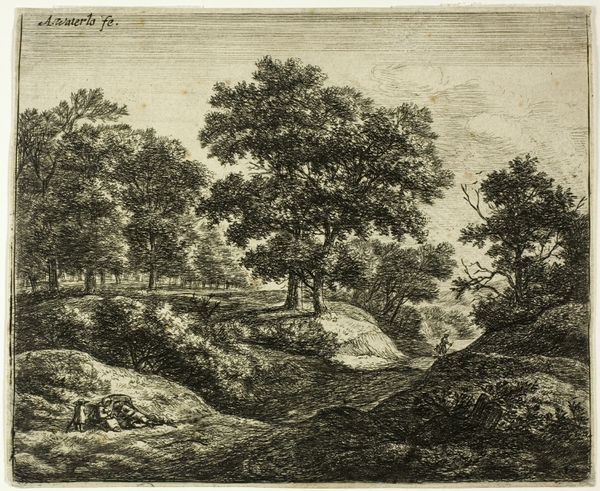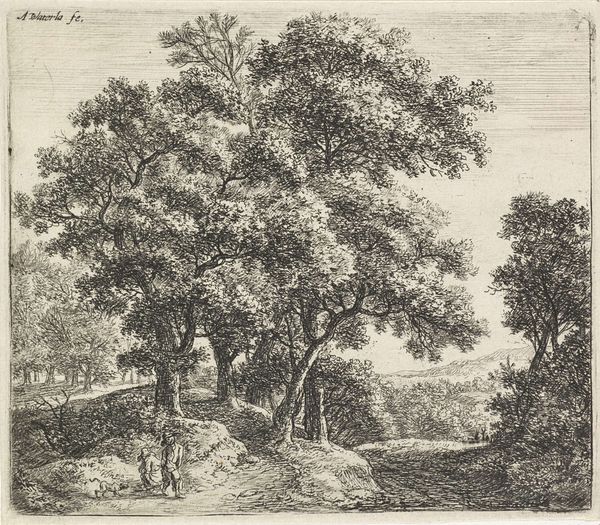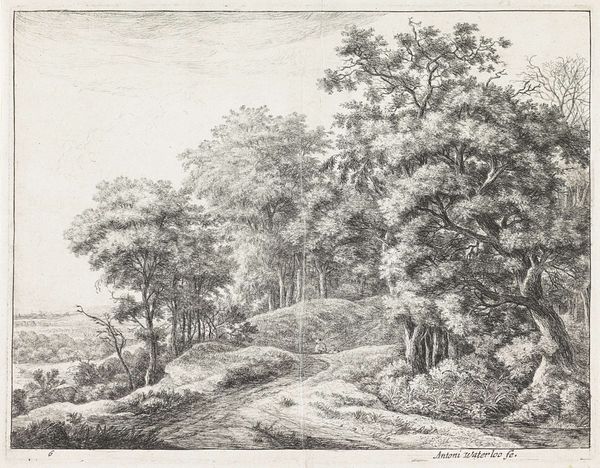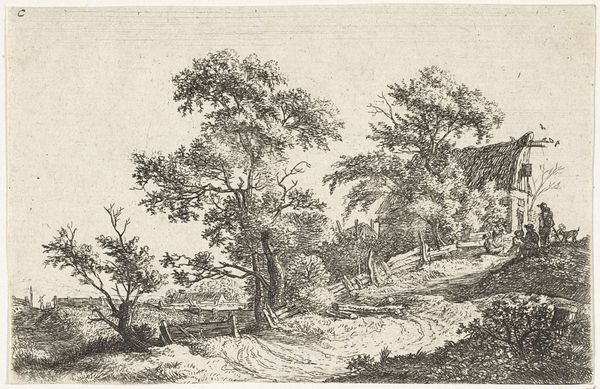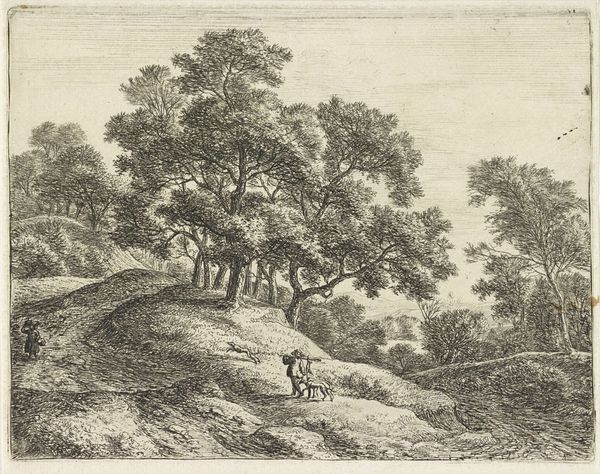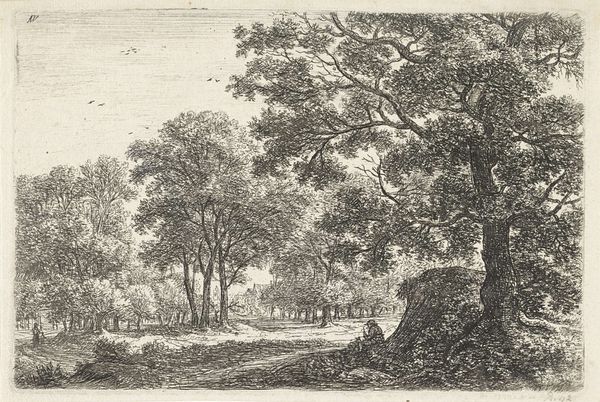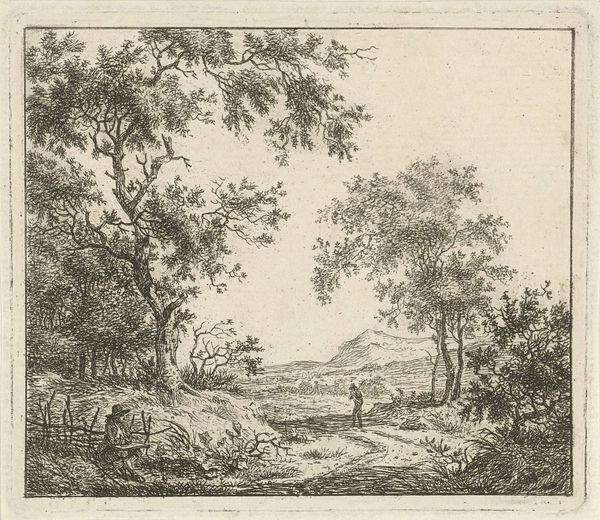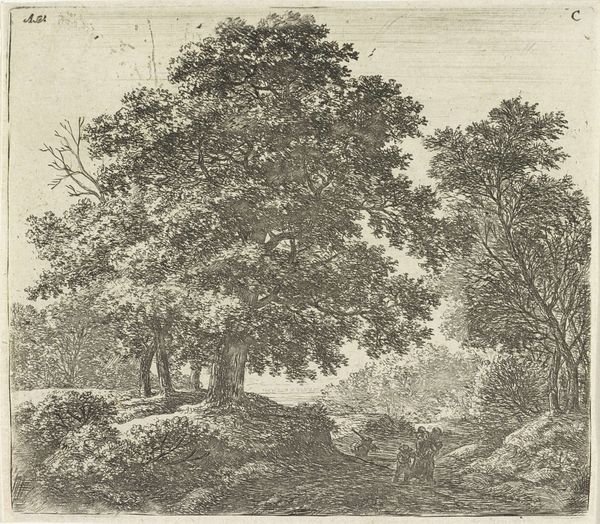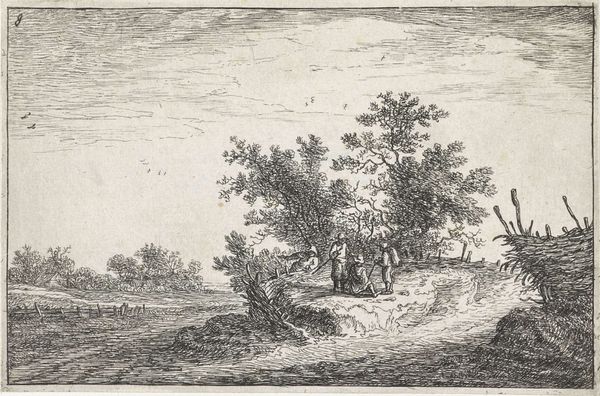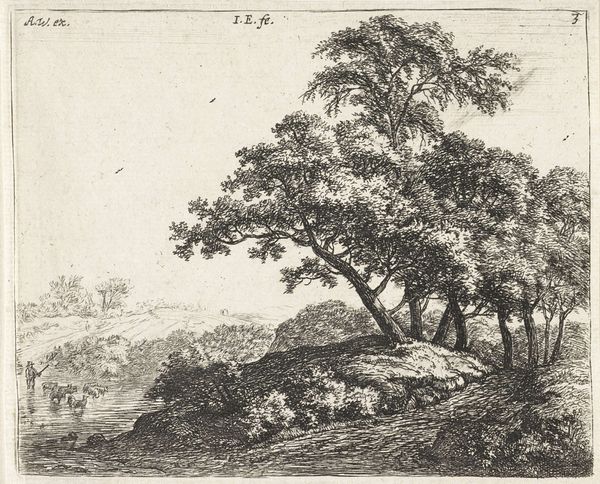
drawing, engraving
#
drawing
#
baroque
#
pen sketch
#
pencil sketch
#
old engraving style
#
landscape
#
forest
#
pen-ink sketch
#
line
#
pen work
#
sketchbook drawing
#
engraving
Dimensions: height 117 mm, width 141 mm
Copyright: Rijks Museum: Open Domain
Anthonie Waterloo created this etching, Resting Shepherds under a Tree, in the Dutch Republic sometime in the 17th century. It’s a seemingly straightforward landscape, but these images of the countryside spoke to a specific cultural moment. Following the Dutch Revolt, the newly independent Dutch Republic began to develop a sense of national identity. Artists like Waterloo turned away from religious imagery toward more secular subjects. The focus on the local landscape suggested pride in their territory and a sense of ownership. In this etching, the figures of the resting shepherds also reflect a wider interest in the lives of ordinary people. However, these idealized pastoral scenes were often commissioned by wealthy urban dwellers, eager to purchase a piece of the countryside. So while the image seems to celebrate the common person, it also speaks to emerging class divisions within Dutch society. Understanding art like this requires us to consider the social, economic, and political context in which it was created. By consulting historical documents, we can better understand how art reflects the values and tensions of its time.
Comments
No comments
Be the first to comment and join the conversation on the ultimate creative platform.

